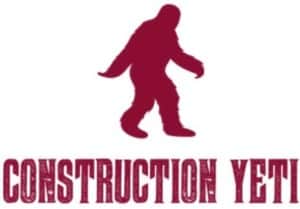Check valves and backflow preventers are critical plumbing health protection devices that work by similar principles but are utilized for slightly different applications.
The main difference between Backflow Preventers and Check Valves is their application. A backflow preventer is to be used in high hazard situations and is meant to fully protect the potable water with their fail safe design while a check valve is used in low hazard situations and prevents backward water flow but it does not have the same fail safe components.
Lets start by looking at why backflow happens? It can be caused in 2 ways; either Back Pressure or Back Siphoning. Back pressure is when there is a higher pressure in the downstream piping than in supply piping. This can be caused by pumps, thermal expansion, or elevation head pressure. Back siphoning is when there is a negative pressure in the supply piping. This causes downstream pipe flow to reverse direction and go back into the supply pipe and can be caused by a water main break or higher than normal draw rates like a fire hydrant discharge. Having proper protection devices in place are very important because in either case the public water supply can be contaminated if downstream water has chemical treatment as in an HVAC chilled water loop or even a chemical sprayer attached to a garden hose. If backflow occurs contaminants such as chemicals, bacteria, and sediments can get pulled into the city domestic water supply pipe and can then be redistributed to someone for drinking, cooking, or other uses that can be dangerous.
When is a backflow preventer required?
Backflow preventers are commonly installed where a city’s water supply connects to a private buildings domestic water piping or where potable water connects to non-potable water such as:
- Mechanical (HVAC) Pipe systems – This includes both chilled water and boiler heating hot water.
- Irrigation Systems
- Fire suppression systems
- Manufacturing systems
- Dark room sinks
The two most popular devices for protecting against backflow are: Double-Check Valve Assembly (DC) for low hazard conditions and Reduced Pressure Zone Assembly (RPZ) for high hazard conditions. While the hazard is ultimately determined by AHJ, cities and other jurisdictions typically have a list of specific examples to help identify the hazard threshold. If the anticipated use is not explicitly named then they all reserve the right to make the hazard determination during the permitting plan review. Note that there is no penalty for over protection. This means it is always acceptable to provide a higher hazard protection device than what is required.
Double Check Valve (DC)
Double check valves were first developed in the 1950s and remain one of simplest and most common devices for low hazard applications. The main operating principle is there are 2 check valves that each have 1 pound springs that keep them closed during a backflow event. When the pressure on the downstream side becomes higher than the public supply side the check valves close and prevents the water from going backwards and backflowing into the city’s domestic water system. The main downside of a double check valve is that there are no safeties on the device in the event the valves malfunction or debris in the line holds the check valve from fully sealing closed. These are also fully closed devices and no way to inspect to ensure they are working properly. Double Check Valves can be installed with a meter to indicate if there is backward flow. This meter can be used to automatically operate electronic control valves which close and turn off the public supply water if backflow is detected.
Reduced Pressure Zone Assembly (RPZ)

Reduced Pressure Zone Assemblies or RPZ are for high hazard scenarios and are the most commonly used devices to protect and separate the potable water service to a building from the building side pipe. Just like the double check valve assembly, a Reduced Pressure Zone Assembly (RPZ) has two independently operated check valves but it also includes a hydraulically operated differential relief valve located below the first check valve. RPZ’s work on a principle that they reduce the water pressure across the device by about 8 psi. This higher pressure on the supply side keeps the valves closed to prevent backwards flow. In the event of a failure of either or both of the check valves, the relief valve will open and water will flow out of the device and typically to a floor drain. This protects the city supply water from being contaminated by whatever may be in the buildings pipes.
An example scenario would be where domestic potable water ties into a Mechanical system (either chilled water or boiler water) for makeup purposes. Typically these HVAC pipes will have chemical treatment in them to protect and prevent corrosion. Having an RPZ backflow preventer is a fail safe way to ensure that there is no possibilty that the chemicals can flow back into the buildings (or city’s) drinking water supply.
For continued safety and compliance, it is equally important that the building’s operator or engineer keep up with the regular maintenance and inspections. Backflow devices are required to have annual inspections by a certified backflow testing and service company. Even when tested and certified annually, they will need to be replaced or rebuilt usually every 5-8 years.
Summary
Check valves and backflow preventers are very critical components of a facilities plumbing system and the importance selection or specification of the proper device should not be overlooked. In addition, regular maintenance and inspection of your devices will ensure

